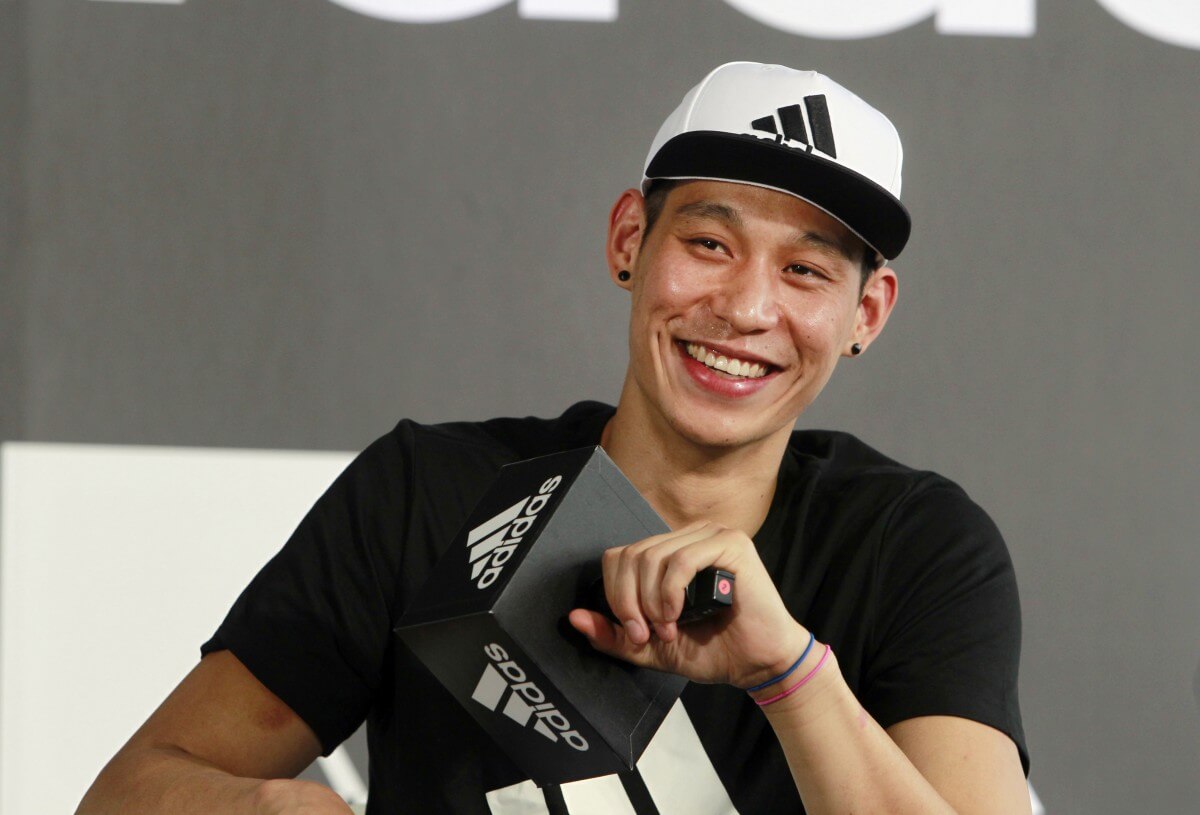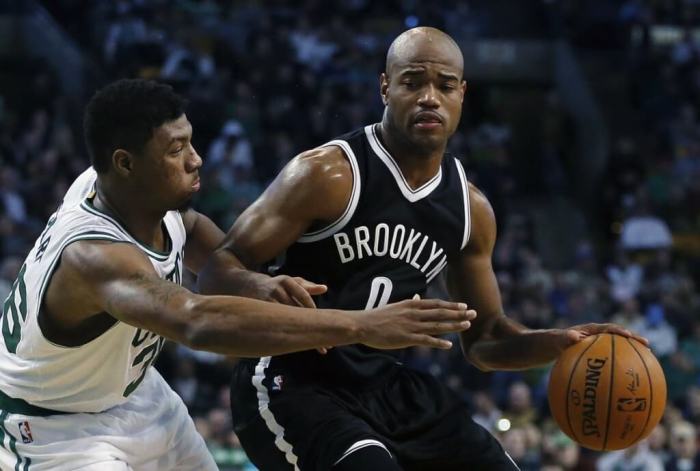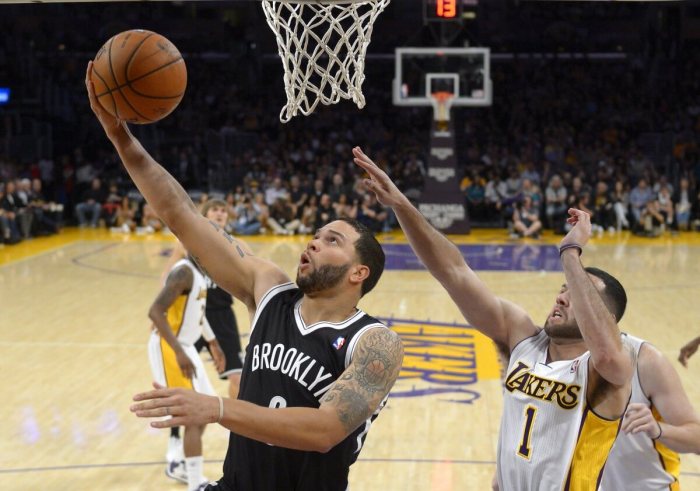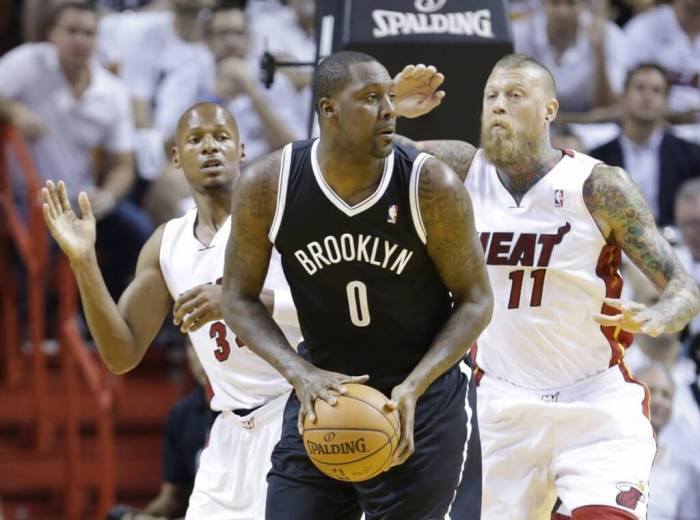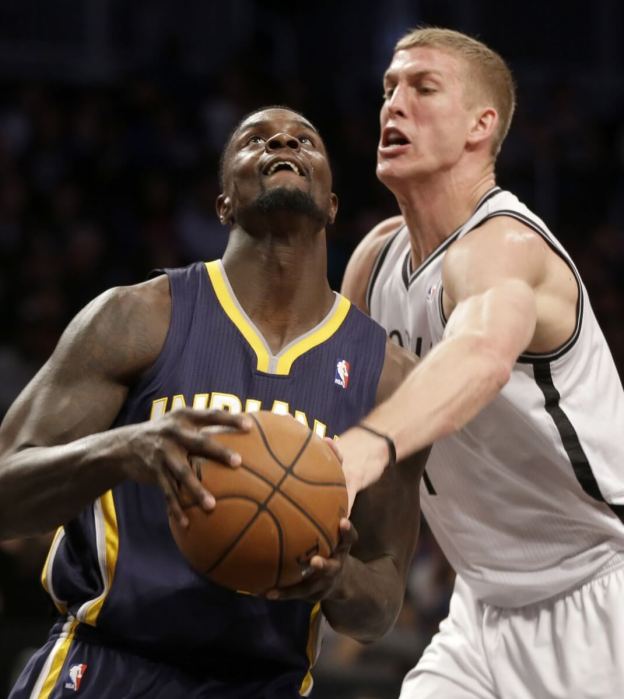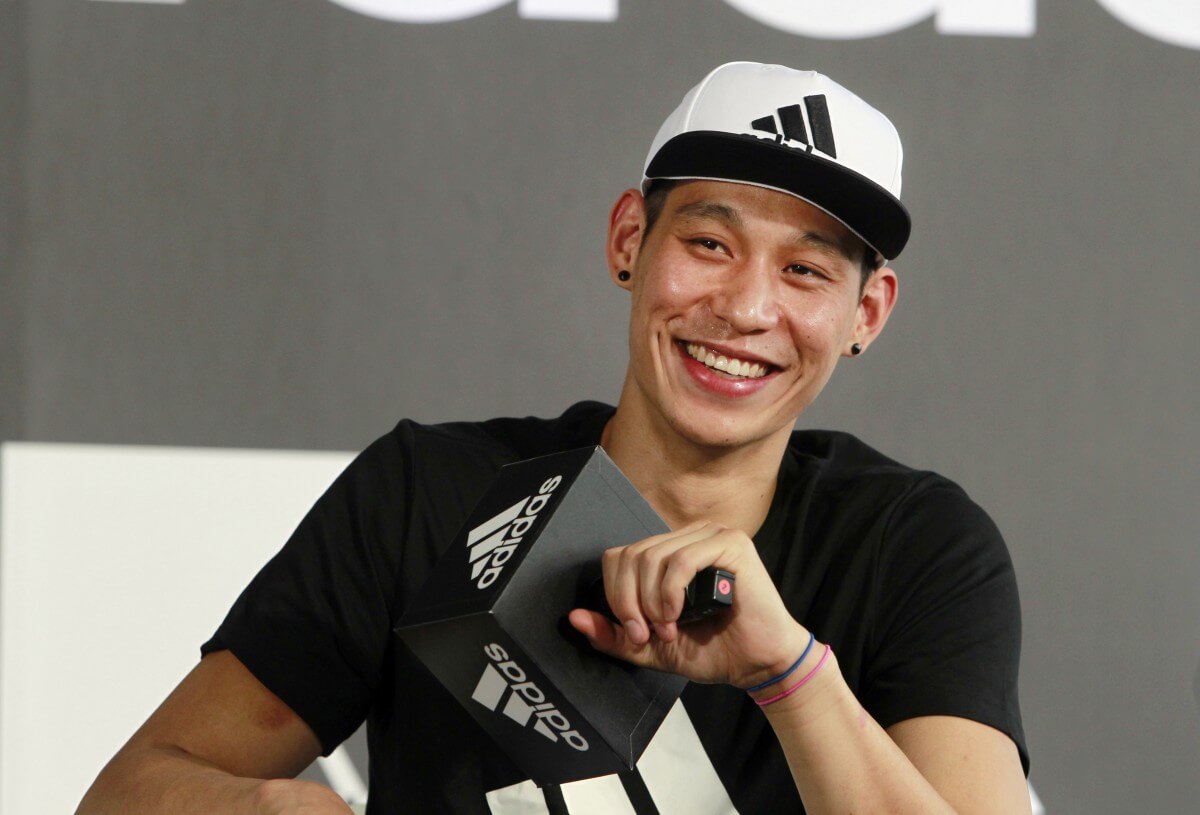
Jeremy Lin, point guard
2015-2016: 26.3 MPG, 11.3 PPG, 3.0 APG, 2.8 RPG, 0.7 SPG, 0.5 BPG, .412 FG%, .336 3PT%, .815 FT%, 78 G
Who is Jeremy Lin?
Essentially, Jeremy Lin is the NBA’s version of the Rorschach test. To some, the 6’3 point guard is still the player who captivated the imagination of the basketball fans around the globe in 2011-2012 — the same one that never had a fair shot since leaving the Knicks. To others, it seems as if he’s a lucky soul that used to live on Landry Fields’ couch and is now a millionaire. Nowadays, Lin is the Brooklyn Nets’ starting point guard and what he does with his new found role may finally put the incessant argument about his ability to rest.
No one probably knows that better than Lin himself, as he jumped at a chance to run his own team on the bargain contract of 3 years, $36 million with a third-year player option. In a buyer’s market, he chose a starting opportunity over cold-hard cash.
Reunited with Kenny Atkinson, the once-tenured developmental assistant for the New York Knicks during Linsanity, the Nets’ new duo will allow the point guard to rip up the aforementioned Rorschach test and write his own story. How Lin responds to the heightened responsibility is easily the most interesting storyline in the Nets’ upcoming season of low expectations.
2015-2016 Recap
After bouncing around with the Los Angeles Lakers and Houston Rockets, Lin found a home with the Charlotte Hornets, a franchise that shocked the league, made the playoffs, and pushed the Miami Heat to seven games in 2015-2016. Steve Clifford, the Hornets’ head coach, even argued it may have been Lin’s “best year of his career.”
Lin played the role of combo guard masterfully for Charlotte, coming off the bench to backup Kemba Walker but often playing alongside him during crunch time at the shooting guard spot.
He truly came into his own when the Hornets’ veritable Swiss Army knife Nicolas Batum went down with a nagging toe injury in January. Lin showed similar versatility as the team’s new starting two-guard, demonstrating an ability to attack, distribute, and space the floor as a deadly shooter beyond the arc. Over the course of the season, Lin became a member of two of the ten best-rated regularly used lineups, per NBA.com’s John Schumann.
After an equally impressive playoffs — 12.4 points and 2.6 assists per game — Lin soon became one of the hottest names on the free agent market at a position where the pickings were slim. As many would later point out, Lin joining the Nets made too much sense as he could be the starter, play in New York, and work with Atkinson again, one of his favorite coaches.
What does he bring to the table for the Nets?
His speed, size, and ability to attack the rim are not really up for debate and his former defensive liabilities have largely subsided, per his former coach — and noted defensive guru — Steve Clifford. In fact, with good size and lateral quickness, he can be a versatile asset in what looks to be, at first glance, an aggressive defense under Atkinson.
Lin thrives best when the ball is in his hands, with the court spread, and when he’s given the green light to attack. That’s the situation he had in Charlotte and, especially, New York. This year, he’ll check all three off his list.
So, then, it’s safe to expect that last year might be his floor for 2016-2017. However, there’s one stat to look for that will really define the type of player Lin is: turnover percentage. When he broke into the league in 2011-2012, at the height of Linsanity, he attacked the rim without abandon, but struggled with an almost ghastly turnover rate (21.4%). It’s a statistic today that Lin critics still hang their hat on, even though it didn’t stop the Knicks from winning back then.
Last year, that number dropped to a more respectable 14.9% turnover rate — the best of his career. Of course, that mark came with an asterisk as Lin had less responsibility, competed mostly against bench units, was surrounded by better personnel, was often used as a secondary ball handler, and maintained an overall lower usage rate (22%).
He’s quick, he’s big, and he can flat-out score. That’s what we know, but what we hope to learn is that Lin can slow the game down, see the floor, and take better care of the basketball. Additionally, I’d love to see him develop pick-and-roll chemistry with Brook Lopez and whether or not all of that reported work on his jump shot pans out. If he accomplishes this all, then Lin is in for a season that may not lead to the playoffs — but should prove his critics wrong for good.
What did pundits say about the signing?
Sports Illustrated: While noting some of Lin’s shortcomings, CNNSI’s Ben Golliver gave the Lin signing a B+, stating: ”Brooklyn filled an obvious need, it didn’t drastically overpay, it added a potential trade piece down the line, and it acquired a badly-needed spark to one of the league’s blandest rosters.”
ESPN: “In a sea of bad contracts during free agency’s first few hours […] Lin’s deal stood out as an oasis of sanity,” wrote ESPN’s Kevin Pelton in his real time free agency grades. And his colleague, Bradford Doolittle added: “Lin represented the Nets’ best available option.”
Tim Bontemps, Washington Post: The former Brooklyn beat writer rewarded the Nets an A for Lin, citing: “This was one deal that made too much sense not to happen. The Nets were in desperate need of a starting point guard, and Lin was said to be intent on finding a starting job.”
He continued: “The Nets got a steal getting Lin to come to them at about $12 million per season.”
The Lin Highlight Reel Theater:
In what may have been his best game in 2015-2016, Lin against the San Antonio Spurs showed off his full arsenal of moves. From crafty finishes in the paint to perfect three-point shooting to stepback fadeaways, Lin had it going against the Western Conference powerhouse en route to an impressive comeback victory. If he can bring performances like that to Brooklyn, fans will be begging for a statue outside of the Barclays Center in no time.
3/21/16: 29 PTS, 11-18 FG%, 4-4 3P%, 2 AST, 7 RBS, 1 STL, 3 TOV
Bottom Line
For arguably the first time in his career, he has the complete confidence of both his coach and his organization. Lin was the marquee signing of the Nets’ offseason, but now it’s time to see what he does with it.
For Nets fans, even if he can’t meet his own expectations, he’s a clear upgrade from last year’s point guards in almost every sense, despite what Jarrett Jack may think. He’s a better shooter, distributor, finisher, and defender than last year’s lackluster crop and represents a much faster style of play than the last few injury-riddled seasons with Deron Williams at the helm. Lin’s presence alone marks a better on-court product and a reason why critics may ultimately have the Nets’ over/under a bit wrong.
While Lopez expects to be the focal point of the Nets’ offense, the ball will rest in Lin’s hands as much as possible and there’s no competition to wrestle it away from him. This is Lin’s team, for better or for worse, and how he manages the team moving forward will dictate much of Brooklyn’s season and future.
The Brooklyn Game Player Previews: Jorge Gutiérrez, Egidijus Mockevicius, Yogi Ferrell, Chase Budinger, Beau Beech

